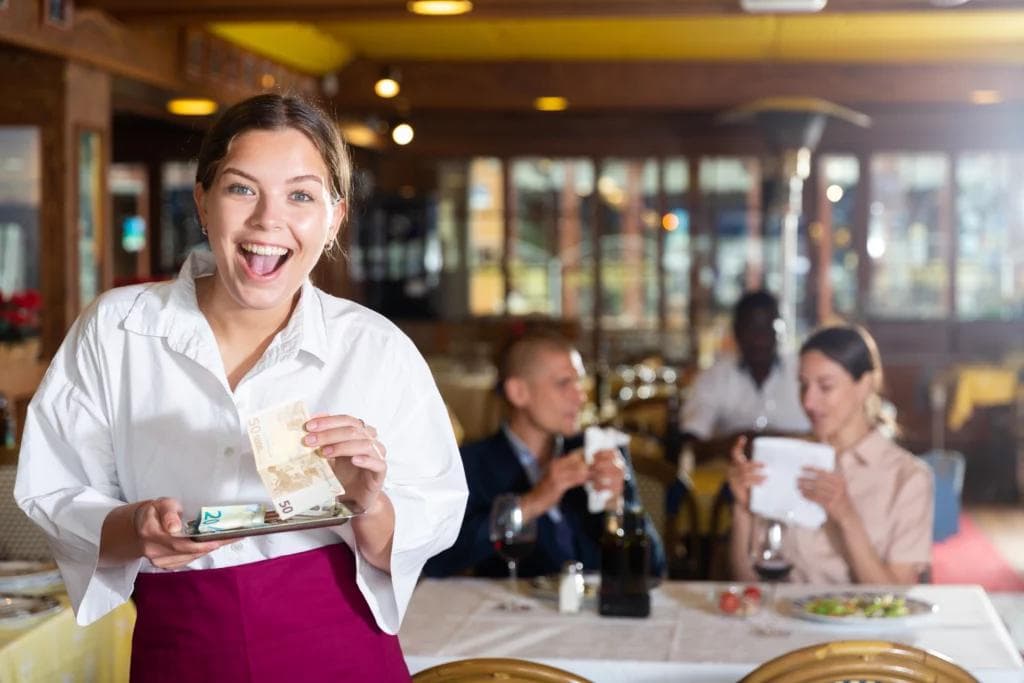Tip Management system is essential for the American culture of hospitality. In the United States, the waitstaff is motivated to offer exceptional customer service and would expect a good tip for outstanding guest care.
Although there are no written rules on how tip management should be distributed among employees at a restaurant, there is common sense. We will provide some ideas about how to streamline restaurant tips the right way so that your employees feel content and the flow is fair for all.
Fairness is an important keyword when managing employees in the service industry. A just distribution of tips also shows how well you observe and appreciate hard work as the owner or the manager. In a harmonious restaurant team, everyone puts in the maximum effort to contribute to collective success.
A good team understands that if the food is undercooked or the plating is poor, a great waiter is not enough to score a great amount of tip. Similarly, amazing food matched with poor customer attention on the floor may ruin the tips for the whole team.
In the end, good tips are only achievable when customers are truly satisfied, and that requires a team effort.
How to Manage Tips for Restaurants

Above, we touch base on the importance of maximizing your team’s tips. In the following section, we want to explain efficient tip management.
1. Tip Pooling
Tip sharing, also known as tip pooling, is a contractual agreement that enables restaurants to collect all tips and then divide the money evenly among their staff members. It is when staff, including those who aren't tipped directly by customers, consciously choose to share their tips with one another.
This is a fair system that will benefit all employees equally if this is the tip management mechanism your employees have agreed to pursue. Remember that imposing something people do not support may not work, as the dynamics of each restaurant are different. You should raise the issue at a staff meeting, letting the team discuss and decide on the best way to handle tips.
2. Percentage sharing
Sometimes, there is a bar at a restaurant, which means that there’s a mixologist doing elaborative work. Sometimes, it’s a tapas restaurant that is focused on the bar that serves both the drinks and the tapas.
Other times it’s a sushi bar or perhaps a sandwich corner. You should get your team to talk about ways they feel at ease when it comes to sharing tips.
If they feel that tips should be distributed based on percentages, this is how it works:
The support personnel at a restaurant receive gratuities depending on a portion of the tips they receive. An amount of the overall tips is allotted to each supporting service position. The standard percentage split is 10 percent for the bartender and 25 to 30 percent for the rest of the team. These numbers aren’t in the restaurant bible, so feel free to improvise, keeping in mind that the whole point is to keep your staff happy for maximum devotion and loyalty. Percentages will depend on the specific dynamics of your operations and the way your team agrees.
3. Hour-based tip sharing
When distributing tips, it's crucial to bear in mind that team members frequently put in various amounts of time and take shifts according to their own schedules. Suppose the team decides that it isn’t fair to give someone who worked a four-hour shift the same amount of tips as someone who did an eight-hour shift. As a result, hours worked constitute a base for the calculation.
The entire amount of tips is divided by the total number of hours that all workers worked to determine how tips should be distributed based on hours worked. The result is then multiplied by the number of hours for each employee.
To provide an example;
Say your team made $1,000 total in tips this week.
Team member Anna has put in 9 hours.
Team member Hassan did a 10-hour shift, while team member Karina put in 6 hours.
Total work hours worked: 25; 1000/25 = 40.
The calculation goes like this:
9 x 40 = $360; since Anna worked 9 hours, she gets $360 in tips.
10 x 40 = $400; Hassan worked 10 hours, and he receives $400 in tips.
6 x 40 = $240. Karina worked 6 hours, so she gets $240 in tips.
Cloud-based Revenue Management is Here
Cloud-based revenue management software FineDine helps restaurant owners achieve their goals. It optimizes your revenue by managing bookings, stock, inventory, and sales. It also helps in monitoring the performance of the staff, regulating shifts, pointing out your best-sellers, and much more.
FineDine’s cloud-based revenue management software can help restaurant owners and managers in different ways to get much better results. FineDine's mobile ordering and fast checkout feature increases the average order quantity by 20%, saves 15 minutes per table, and allows you to get 40% more tips.
Installation-free, hassle-free, and easy for you, your team, as well as your guests. A wonderful illustration of how to enhance many elements of your business, including tip management for restaurants, is FineDine. As a consequence, your team will be happy at work, which will be reflected in your customers.
Your employees' happiness, productivity, and engagement might all be greatly impacted by technological solutions like FineDine that have direct access to stock, menus, and prices.


